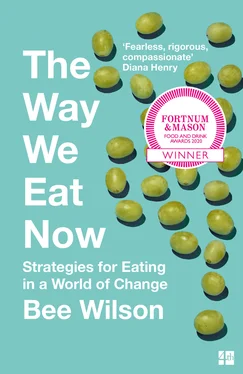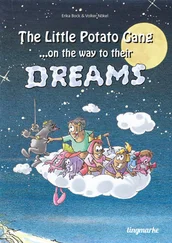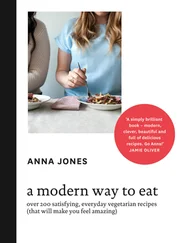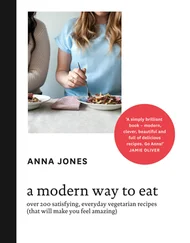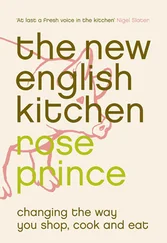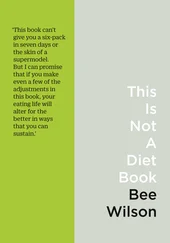In August 2017, I was in Copenhagen for the World Food Summit, a two-day conference aimed at finding better ways for the world to feed itself. One of the speakers was Harsimrat Kaur Badal, the Minister for Processed Foods in India’s government (I never knew such a job existed). Badal stood up and gave a passionate speech lamenting the Indian attachment to freshly cooked food made from fresh vegetables. India, she said, was a country where most people still ate three home-cooked meals a day. The audience of Danish and international food writers, chefs and representatives from the food industry let out a mild sigh of envy. Oh for the fresh-cooked food of India! But the minister was trying to explain to us that this fresh and delicious food was actually a very bad and wasteful thing. ‘We only process 10 per cent of the food we produce in India,’ she lamented. She compared this to the countries of Western Europe, where around 60 per cent of food is processed. The minister made the point – quite reasonably – that the middle classes in India wanted to eat the same foods that were available to people with money in the rest of the world. She also pointed out that India wastes $40 billion worth of food every year, mostly because of inefficient distribution networks. ‘Food waste is morally wrong.’ The answer, she suggested, was foreign direct investment (FDI) in processed food.
India was a gigantic business opportunity, the minister explained. It was a market of 1.4 billion people, whose potential as consumers of processed food was still largely untapped. ‘I invite you all to come and partner with my country,’ she announced. ‘We want you to teach us your Danish technology and knowhow.’ In return, she offered India’s amazing ingredients and a ‘platform’ of customers ripe for the picking.
Is this really the route that the governments of India and other developing countries want to take through the nutrition transition? India is a country with a long-standing love of vegetables, which has the potential to experience something like the South Korean version of stage four, rather than the health-destroying version seen almost everywhere else. Rising incomes in India are a wonderful and life-changing thing, on so many levels. But already, as India welcomes more ultra-processed food into its diet, the country is seeing an alarming rise in type 2 diabetes and insulin resistance. Is there a way for India to enjoy life beyond hunger without having to suffer the diseases of affluence?
Based on everything we know about history, stage four will not be the final phase of the nutrition transition, but no one can say for sure what future diets will look like. One thing that seems certain is that after fifty years or more of over-consumption there will have to be some kind of shrinking back in the amount of calories populations consume. What remains to be seen is whether this reduction will be forced upon us by climate change and failing harvests, or whether we can take control of our own food destiny and start to eat within the limits of what our bodies need and what the land can bear. Barry Popkin is among those who predict that with the right policies the latter can happen and we will leave behind stage four for stage five, a phase of life that he has christened ‘behavioural change’.
Stage five – if it ever fully comes into being – is where the hope lies. During this phase, most people would still be affluent and live in cities, but the cities would take on different characteristics, with more opportunities for physical exercise and more accessible and affordable fresh produce. This stage would be characterised by people eating more vegetables and fruits and experiencing a rapid decline in degenerative diseases. During this phase, greater knowledge of the links between diet and health would lead people to eat better diets. Phase five is where we would all like to be living and eating: a comfortable life with neither hunger nor disease, with delicious food but not an excess of it.
There are little glimmers that stage five may be emerging – not everywhere and for all people, but in enough places that it starts to look a bit like the future. One of those places is Denmark.
‘So much has happened in twenty years. It is unbelievable how exciting it is to be a cook right now!’ exclaims Trine Hahnemann, a caterer and cookbook author based in Copenhagen. I meet Hahnemann at the same World Food Summit in the summer of 2017 where I hear the Indian Minister for Processed Food speak. Hahnemann takes me to a wine bar in one of Copenhagen’s many beautiful old townhouses where we drink Grüner Veltliner white wine from elegant Scandinavian glasses with long stems and flattened bulbs. She tells me how she sees good food as central to the quality of life in general.
As a Dane, Hahnemann’s experience of modern food is completely different from that of her middle-class equivalent in Mumbai or Delhi. Denmark passed from stage three to stage four of the nutrition transition in the 1950s and 60s. Now, it is heading somewhere altogether more flavoursome and interesting. If stage five exists anywhere, it is surely in Copenhagen, where the majority of adults cycle to work and the food culture centres on dishes which are healthy, sustainable and delicious. As in South Korea, Denmark benefits from a government that takes the quality of its citizens’ diet seriously. In 2004, Denmark placed a blanket ban on trans fats in foods for sale, a move that played a part in reducing the country’s rates of heart disease. 66
When Trine Hahnemann was a child, no one in her Copenhagen school had heard of garlic. She remembers how long it took for houmous to be accepted by conservative Danish tastebuds. ‘Yet now,’ she remarks, ‘you couldn’t go to any food store and not find houmous. That’s in thirty years. That’s diversity.’ A mere ten years ago, there was no Vietnamese food to be found in Copenhagen, whereas now there is a passion for pho, a spicy Vietnamese broth heady with green herbs and vegetables. Yet the Danes have also retained their love of healthy traditional foods such as dense dark rye bread.
As someone who caters for government-funded work canteens, Hahnemann has seen first-hand how the Danish government makes healthy and sustainable eating a priority for everyone in society, rich and poor. As of 2016, a new law came in requiring that any food served in a public institution – from a school to a hospital – must be 60 per cent organic. Hahnemann finds that the Danes she cooks for are remarkably receptive to vegetables and flavourings which would once have been seen as threatening. If a big batch of cauliflower arrives from her suppliers, she may serve it three days in a row: day one with a brown butter sauce, day two as Indian pakoras and day three Italian-style with capers.
Despite Hahnemann’s love of vegetables, not everything she cooks and eats would be defined by a nutritionist as strictly ‘healthy’. Like most Danes, she adores cake and always keeps a sponge cake in her freezer in case friends drop by and she wants to rustle up a quick rhubarb and chocolate layer cake, filled with a rich rhubarb cream and topped with chocolate ganache. ‘Life without cakes would be a bit too sinister,’ Hahnemann writes in one of her cookbooks, adding that she believes cake to be good for mental health. Just as the Japanese-style diet eaten by Fumiaki Imamura is a mix of ‘healthy’ and ‘unhealthy’, so is the modern Danish diet. But the balance, in both cases, is tipped towards the healthy. 67
Not every country can be like Denmark, which benefits from a tiny population, substantial wealth and low levels of social inequality. It would be difficult to replicate exactly the way that the Danes eat anywhere else. The question, however, is whether other countries could shift to a phase where the typical diet is abundant but no longer damages the health of millions.
Читать дальше
